15 Stories of Hilarious Medieval Victories
The Medieval Age was full of deadly, vicious, and brutal times. The standard
of living at the time was poor for the majority of people that weren't royalty.
There was always a constant sense of danger lurking about, especially during
times of War. In this era, there were no laws dictating what was inhumane or
wrong to Mankind, so many people were subject to the brutality of medieval
soldiers. Battles were waged all the time between countries at war, and at some
times between the people of a country and the men who ruled them. It's important
to understand the significance of all these battles, which would eventually
shape the environment and borders of Modern Europe. The Hundred Years War
between England and France was a huge factor in deciding who would rule the
majority of Europe at the time.
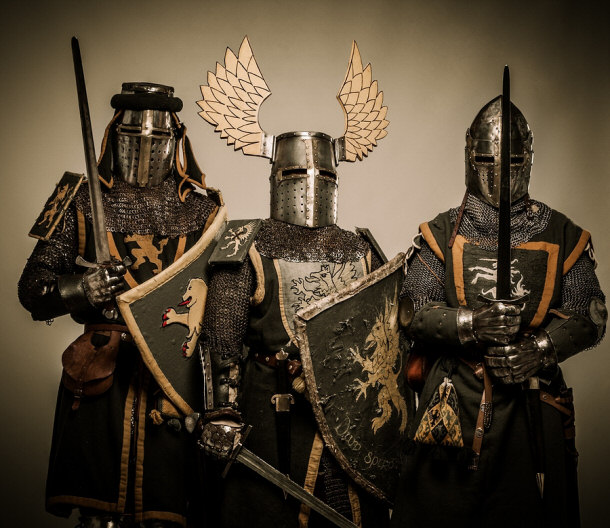
15) Battle of
Hastings
The first battle that we're going to start off is with the intense Battle of
Hastings, which happened on Oct. 14, 1066, just north of Hastings. This battle
was known as one of the largest between the English and the Normans. William the
Conqueror, a mighty Norman general, defeated the forces of King Harold II of
England on this day, and it was considered one of the bloodiest battles in
Medieval history.
Bayeaux Tapestry Battle of Hastings:
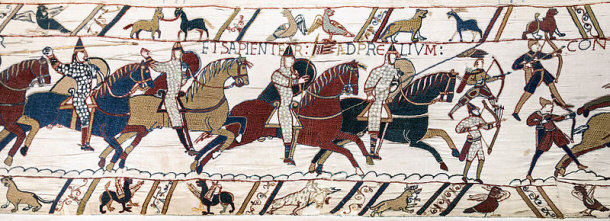
Two weeks prior to the battle occurring, William, who was the duke of
Normandy, had just invaded England, looking for his rightful title to the
English throne. Over 14 years prior, the English King Edward had promised
William the title to the throne. However, upon his death, the title was given to
Harold Godwine, the leader of the most noble family in England. William began by
assaulting Pevensey, on the southeast coast with over 6,000 troops and horses.
After conquering Pevensey, he marched his army on towards Hastings. The battle
itself saw numerous casualties on both sides. An amazing and humorous thing happened during the battle. It is believed that
King Harold was shot in the eye with an arrow. Rather than falling down from
pain, history claims he was still fighting the battle with one eye completely
gouged by the arrow. He is pictured in some medieval tapestries as pulling the
arrow out with one arm and waving a sword with the other. He eventually perished
from his wounds later on in the day, and William the Conqueror won the battle.
William would later invade London with no problems and became the first Norman
King of England.
14) Battle of
Northallerton
Also known as the Battle of the Standard, this battle was between the Scottish
and the English on August 22, 1138 in Yorkshire. The Scottish forces were led by
King David I, while the English were commanded by William of Aumale. This battle
was one of two key battles during the English Civil War. This battle was fought
on English territory, approximately two miles north of the town of Northallerton.
The Scottish army had a higher amount of troops, but the English had planned an
attack hours prior. The English army was able to repulse a series of Scottish
attacks. One of the key points in this battle was the fact that although the
English army was compromised of levied soldiers, with few knights and
men-at-arms, they were able to use advanced armor and a series of arrow attacks
to subdue the Scottish Army.
Northallerton Yorkshire England:
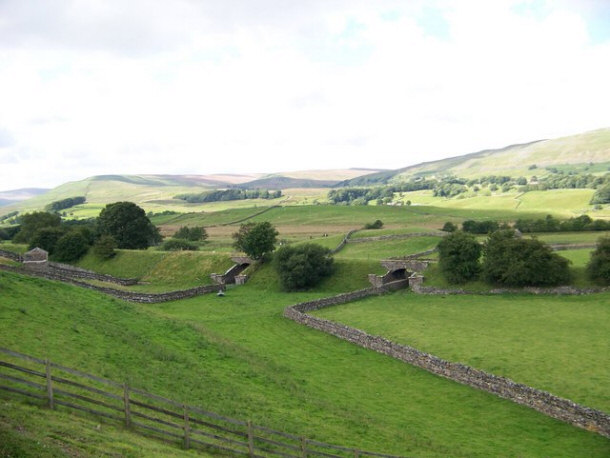
Photo Copyright Elliott Simpson
During this crazy morning battle, the Scottish employed the use of Galwegian
infantry. These men were completely unarmored, and some were almost naked,
charging head on into the English lines. The Galwegians that were not cut down
with repeated English arrows were met with better armored English soldiers
wielding swords and shields. The Scottish ended up retreating after suffering a
huge loss of soldiers. One surprising fact from Battlefieldstrust.com states
that had the English decided to pursue the fleeing Scotsmen, they would have
completely destroyed the army. There would be no hope of recovery for Scotland.
13) Battle of Legnica
The Mongols of the Medieval times were considered to be devils on horseback by
many European scholars of that time. The Battle of Legnica was between the
Mongolian Empire of the East and a defensive force of a variety of European
fighters under the Polish duke, Henry II the Pious of Silesia. The Mongols were
originally attempting to pursue the fleeing Cumans, a group of people who
inhabited the medieval Balkans. They were seeking refuge in the country of
Hungary, and King Bela IV would not surrender to Batu Khan, the leader of the
Mongols. Subutai, his brother, began to plan the eventual invasion of Europe.
Many small battles were fought, and the two armies met in the area known as
Legnica. The Mongol army that defeated King Henry's army was actually not an
army but a large group of skirmishers. It was their original goal to meet up
with a larger Mongol Army commanded by Subotai, which was two days away. They
intercepted King Henry and the fight began.
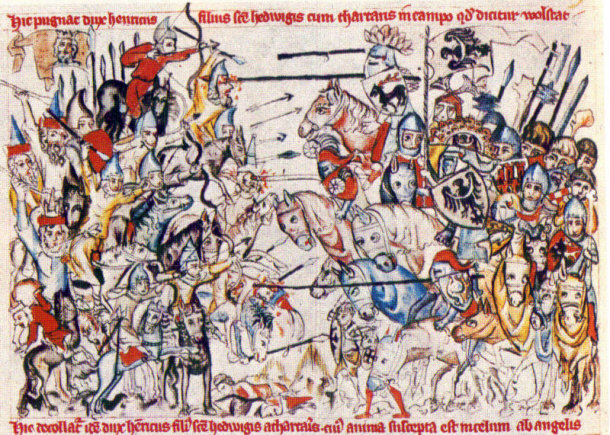
The battle was one-sided throughout the entire match-up. Historians have
stated that the exact number of soldiers within the Mongol army was unknown, but
assumed to be around 10,000. King Henry was assumed to have around 10,000 troops
as well. The Mongolian hit and run tactics proved superior to the standard
European way of battle. The forces of King Henry slowly began to die off from
arrows and lancer attacks. A funny moment occurred when Polish cavalry were
surging for an attack on an apparently weakened flank of the Mongol army,
someone had shouted in Polish to run and retreat. Historians believe that the
shout actually came from the Mongol army, from someone who understood and spoke
Polish. Had this not have occurred, the forces of Henry might have been able to
turn the tide of the war.
12) Battle of Falkirk
One of our favorite battles in Medieval history, the Battle of Falkirk is a
well-documented one. In case you're wondering why it sounds so familiar, it may
be because this was one of the historic battles that took place in "Braveheart."
Fresh off a defeat at Stirling Bridge, the English army was in need of its King.
Edward, the current English king at the time, marched northwards through his
country to engage William Wallace and the Scotsmen. Wallace employed
"scorched-earth" tactics, which meant they would burn, pillage, and destroy
anything in their pass north. This was to ensure that King Edward's army would
not be able to stop and recover resources.
The 'Wallace Stone' at Brackenhirst:
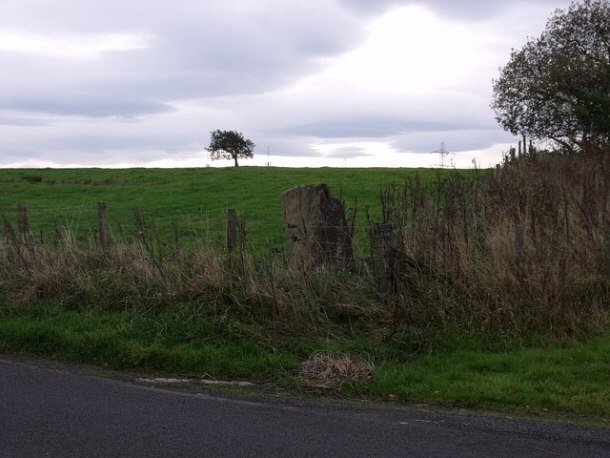
Copyright
Robert Murray and licensed for
reuse under this
Creative Commons Licence
Edward eventually found out that the Scottish army was camped near Falkirk, a
small area in Northern England. In the early morning of July 22, 1298, William
Wallace devised a cunning plan to protect his army against a cavalry charge. He
created long pikes out of the wood nearby to be driven into the ground. This
would protect against a direct assault on his troops. The Knights under King
Edward charged but were unable to break this defensive formation. One incredible
thing happened after the failed attempt that shocked us. During a crucial stage
of the battle, the Scottish Nobles turned their horses and retreated from
battle, along with their armies. Edward eventually managed to dispatch Wallace's
army, while Wallace himself was able to flee. The retreat of the Scottish nobles
was most likely due to bribes and aspirations of power under English rule. Had
they not retreated, and stood their ground, history could have seen a monumental
change in events that have shaped today's European countries.
11) Battle of
Bannockburn
Bannockburn was the location in
which the battle to decide the fate of Scotland would happen. On June 23 and 24,
Scottish hero Robert the Bruce would challenge the army of King Edward II of
England. Bruce was severely outnumbered, but what he lacked in men he made up
for in superior strategic positioning. The men that fought for Bruce used
terrain to their advantage, and eventually were able to rout the forces of
Edward. Bannockburn was the key battle in the Scottish Wars of Independence.
These were wars that would eventually allow Scotland to rid themselves of the
oppressive English rule. This was one of the most famous battles in Scottish
history. An interesting development happened during the beginning of the battle.
An English knight was charging at Bruce across the battlefield. Bruce waited
until the last moment before getting up in his stirrups and bringing his war ax
smashing down on the knight's head, splitting it in two. This marked the end of
the first day of battle, and lowered English morale severely.
Robert the Bruce Monument:
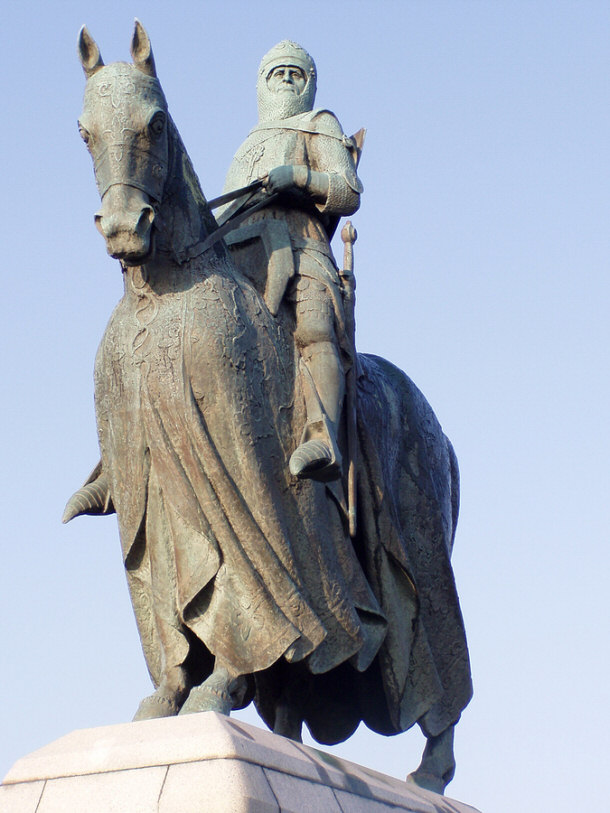
The sheer number of English soldiers proved to be their downfall, and Edward
was not able to maneuver his ranks efficiently. The English lost thousands of
their soldiers, and King Edward II fled the battlefield. Robert the Bruce would
eventually create a treatise that would allow Scotland to be free of English
rule.
10) Battle of Halidon
Hill
Another great battle between the Scottish and the English was the Battle of
Halidon Hill. King Edward Balliol of Scotland was overthrown in a coup during
the Christmas of 1332. Backed by King Edward III, the two opened hostile action
against Scotland by assaulting the town Berwick-upon-Tweed, which was under
Scottish ownership. A Scottish army was a few days march away, ready to do
battle against the English. The Scottish force was decimated by arrows and
men-at-arms, and the most gruesome fighting took place at the English right
flank. This battle was the first one King Edward III had ever participated in,
and he learned tactics that he would later employ. An interesting fact is that
King Edward III was only twenty years old, still approaching manhood during the
Battle of Halidon Hill. The Battle of Halidon Hill can be coined as the
bloodiest battle in Scottish history. Over six earls, 70 barons, 500 knights and
hundreds of spearmen were slain by the English that day.
Halidon Hill battle site:
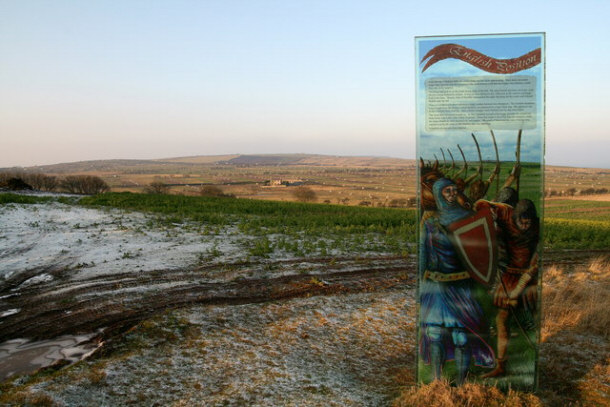
Photo © Copyright Lisa Jarvis
9) The Battle of
Crecy
The Battle of Crecy is known as the beginning of The Hundred Years War, a
devastating century long battle between the French and the English for
domination of land. King Edward III was claiming the throne of France after the
death of its King, Philip IV in 1337. On July 11th, King Edward III marched his
army of 16,000 fully armored knights, infantry, archers, and men-at-arms to a
peninsula on the North Coast of France. British Battles, a popular war history
website, stated that this was when the King knighted his 16-year-old son Edward,
who was Prince of Wales at the time. This 16-year-old Edward would go on to be
known as The Black Prince, a scourge of terror for French soldiers during the
Hundred Years War. As King Edward III was pillaging France, King Philip of
France was preparing an army in Paris to destroy these pesky invaders. The
French made numerous attempts to destroy the British Army, only to be repelled
successfully by a lucky combination of archery and weather. The French lost, and
King Edward III and his Black Prince would go on to secure the city of Calais.
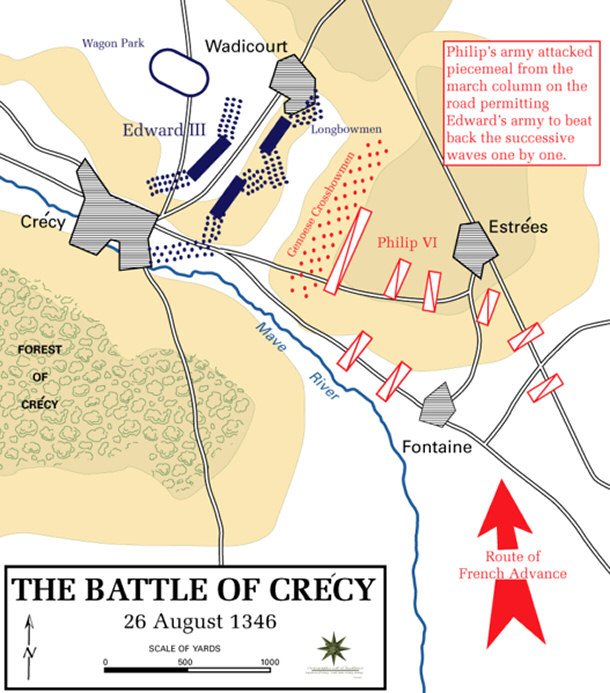
8) Battle of
Shrewsbury
There were definitely some amazing aerial shows during this battle. The Battle
of Shrewsbury was one of the first battles where the English were being attacked
by the longbows that they invented. This battle is one that changed the course
of English and French history. The sky was blackened with the hundreds of arrows
being shot into the air at the same time. The reason behind the battle was
that a noble family by the name of the Percys felt that King Henry IV had not
rewarded them properly for their services. In 1403, the family started a
rebellion, led by Sir Henry Percy. His plan was to join up with Welsh rebels to
amass an even bigger army to attack any English threat. Sir Henry died during
the battle and it was recorded in history as one of the quickest battles in
England. The conflict only lasted a few hours, while many thousands had died.
The only thing to recognize the battle at the site is a small parish church that
conducts an anniversary every year.
This church is called Battlefield Church, and is north of Shrewsbury where
Henry IV beat the rebel northern lords and killed Henry 'Hotspur' Percy:
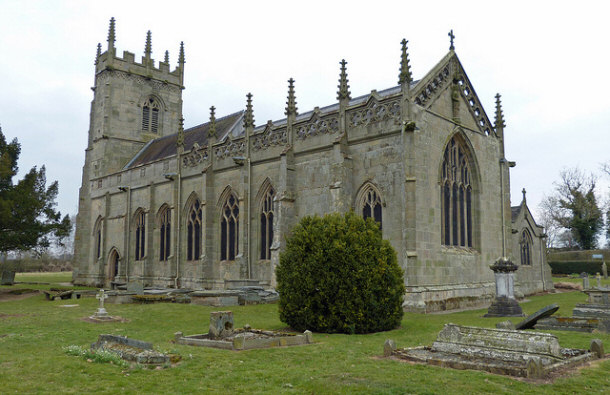
7) Battle of Pinkie
Cleugh
This is one of the funniest names of a Medieval battle on the
list. The Battle of Pinkie Cleugh was yet another fight between English and
Scottish forces. At the time, a cleugh was known as a narrow glen or valley in
Gaelic. England's own Duke Edward of Somerset was sent to Scotland to retrieve a
suitable bride for the 9-year-old King Edward VI. Although the battle was quite
fast, it is considered by many scholars to be quite significant. This was the
first battle where modern combat was fully used. Infantry, artillery, and naval
bombardment were all being used during the battle. Edward Seymour of Somerset
had ulterior motives for going to Scotland. He wanted to secure strategic
garrisons that could be used against Scotland in the future. This was around the
time that gunpowder firearms were being developed, and few soldiers had them.
The English were beginning to outpace the rest of the countries at war in terms
of technology advances. While the army remained relatively the same as everyone
else, major advances in artillery provided the English with the necessary power
to beat the Scottish.
Duke Edward of Somerset:
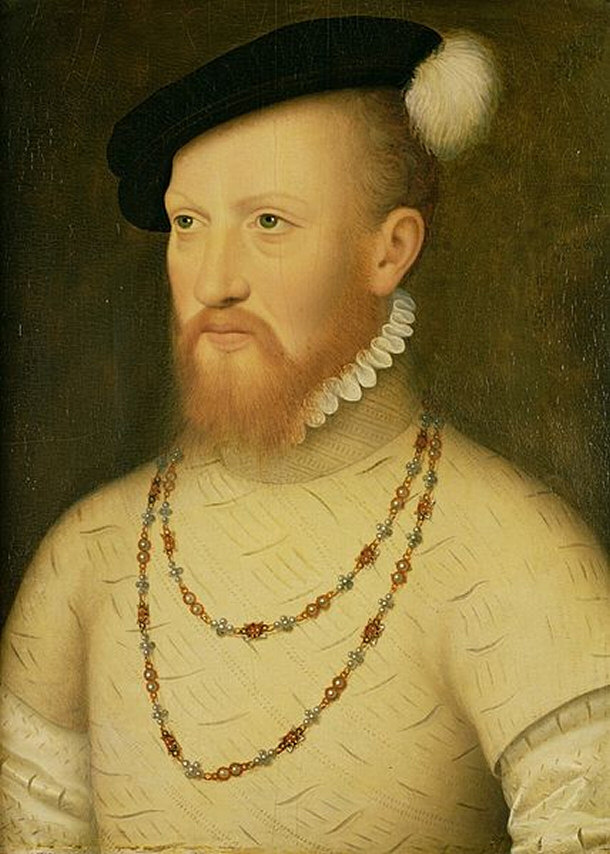
6) The Battle of
the Spanish Armada
The Spanish Armada battle was one of the biggest battles during the Anglo-Saxon
War between England and Spain. Fighting would last for two weeks, with various
skirmishes and small attacks between the ships that would occur during all times of
the day. The battle itself started on July 19th. A captivating piece of
information about this battle is the English's use of fire ships to provoke the
Spanish Armada. The English lit a series of eight fire ships directed towards
the Spanish fleet. Many captains did not want to see their entire ships get
burnt down, so they cut their anchors and began to sail way from the port of Calais.
The fleet eventually broke up and Spain was defeated. What had started out as an
invasion plan eventually turned into a full-blown retreat, and Spain would have
to rely on another method besides naval combat in order to expect a win against
the powerful British. Another interesting fact about this battle was that this
was around the first time that Sir Francis Drake was attempting naval combat.
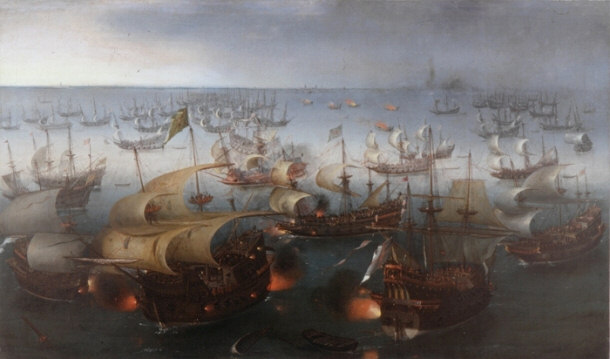
5) First Baron's
War
The First Baron's War was an interesting time in English history. The Archbishop
of Canterbury and many other barons of England at the time did not like the way
that King John was running the country. They gathered together to create a
charter that the King would have to agree to. This charter would become
infamous, and its name was the Magna Carta. This document contained duties,
responsibilities, and outlined rules that the King had to follow in order to
receive any kind of support from the Barons. King John would later to go to the
pope to have the entire charter absolved, due to his reasoning that he was
forced to sign it. At this time, France was interested in the conquering of
England, and offered Prince Louis a chance to take the throne of England.
Through many battles, including one small naval battle, King John was
able to repel the French Invaders. What is strange about this war is that King
John did not perish from any wounds or attacks. King John had food poisoning
while marching. Upon reaching his castle, he died within the night.
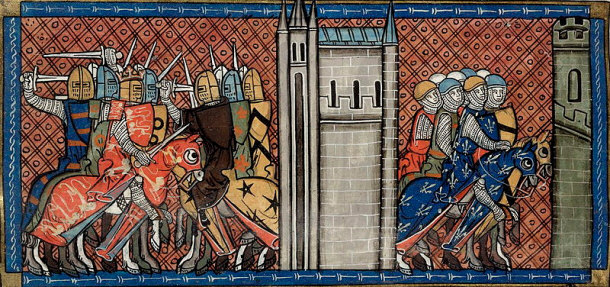
4) Second Baron's
War
The next of the Baron Wars would occur yet again due to an English King not
performing his duties correctly. King Henry III had been squandering away the ruling of his country. The King had married Eleanor, a French noble, and
brought all of her court with her. She and her court would eventually replace
Henry's advisers and spend money on unnecessary things. The Barons thought it
was time to intervene. Barons from all over the country gathered together and
told the King their demands. Henry, however, would not take it and decided to
conspire with King Louis IX of France to help him defeat the rebels. After a
series of smaller battles throughout the month, King Henry and his son were
captured by the barons. The funny thing about this battle was that the entire
time it was being waged, King Henry had no idea the French court was making fun
of him. Eleanor and the French court had their own intentions, and had created
plans in case King Henry lost. Another interesting fact is that battles
were waged in many of the baron's own territories. These territories would be
burned and scarred, ruining them for years to come. In the baron's eyes, it was
all necessary in order to get rid of the current King of England.
Tomb effigy, in gilt bronze, of Henry III of England:
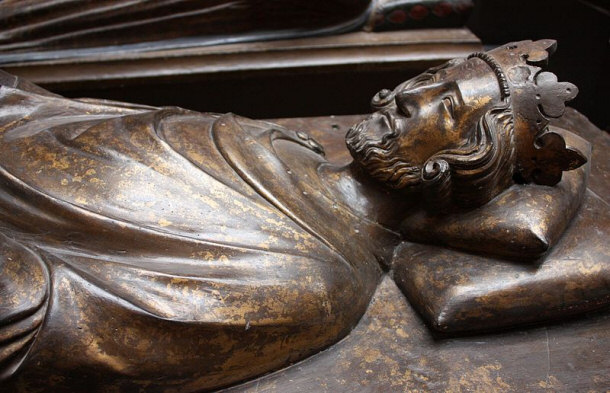
By Wikipedia Loves Art participant "Va_Va_Val" [CC-BY-SA-2.5],
via Wikimedia Commons
3) Battle of Bauge
Going back to The Hundred Years War, we have the infamous Battle of Bauge. It
took place on March 21, 1421 in the area known as Bauge, east of Angers. The
battle itself was relatively small, and the English, led by the Duke of
Clarence, were eventually slaughtered because of their low numbers. One
important factor in this battle was hope. After the French killed the Duke of
Clarence, they felt that they had a superior chance in winning the war. However,
the Duke was the brother of King Henry V, and he would become very
temperamental. When Henry invaded France in June, later that year, he was known
to be extremely brutal to his captives. One murderous recount stated that he hung an entire fortress of French soldiers, even
after they surrendered.
Chateau de Bauge Castle of Bauge:
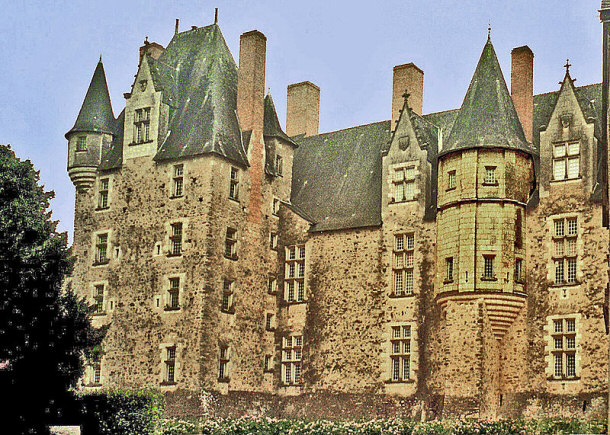
By JC Allin (Own work) [CC-BY-SA-3.0],
via Wikimedia Commons
2) Battle of
Northampton
This Battle of Northampton is yet another English versus English battle. Both
sides consisted of extremely large armies, around 20,000 each, but there were
relatively low casualties. The battle was a great victory for the Yorkists, and
the Duke of York would become known as a hero upon returning to England, and
eventually King. A hilarious piece of information about this battle is that
after it, Queen Margaret, who was aspiring to take the throne from Henry VI with
her son, would refuse to accept an agreement to end the Civil War. She had
not understood
that if the Civil War ended and Henry VI passed, her son would have had a much
better opportunity to take the throne.
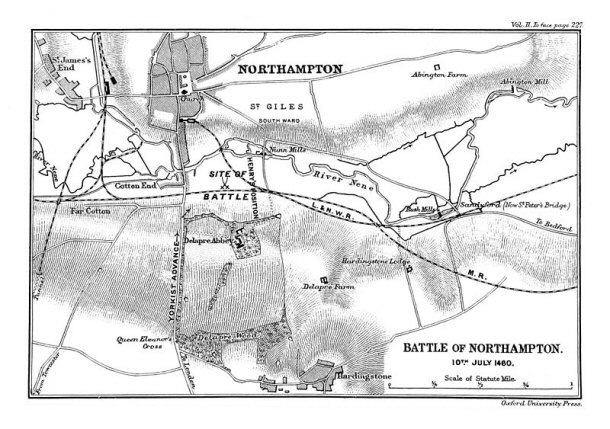
1) Battle of
Bosworth Field
The Battle of Bosworth Field marks the final battle in our countdown and the
last significant battle during the War of the Roses. This war was of civil
nature between the Lancaster House and York. It lasted almost half a century,
with Englishmen killing Englishmen. The battle itself was fought on August 22,
1485 and the Lancastrians won, led by Henry Tudor. An interesting fact about
this battle is that Shakespeare found it to be inspiring, creating a play,
"Richard III," saying it was an unequivocal triumph of good over evil. The battle
was of epic proportions with a total of three small standing armies for both
sides. Another interesting fact about this battle is that the actual outcome and
details are uncertain. Upon winning the battle, Henry hired chroniclers to
portray him as a mighty, virtuous figure that upheld good over evil.
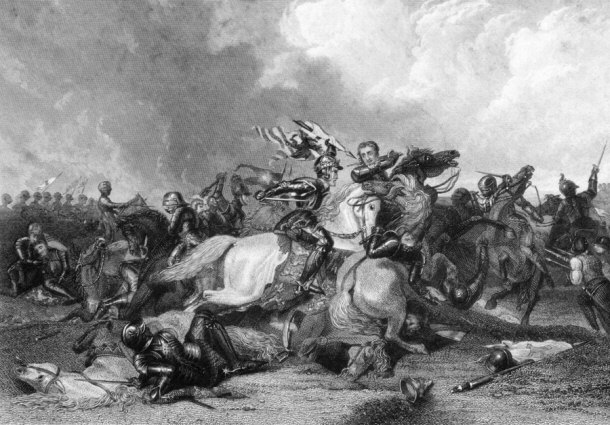
Final Words
These battles all took place during a time when people had an average life
expectancy of 30. This was because, if disease or starvation did not get you, the
trouble of war would. All of these battles mark monumental changes in the
history and shaping of Europe, especially around Western Europe. Although some
of the battles did not have anything that was considered hilarious, there are
some interesting and moving things that happened during the Medieval times. Out
of all the battles listed here, England appears to be the most prevalent. This
is due to the fact that during the Medieval times, England was constantly trying
to expand and assert its power. Many smaller groups who did not want to be a
part of England eventually became assimilated into their culture. Other, larger
groups, died trying to fight for their freedom from British oppression. The
Hundred Years War is still known as the longest lasting war ever. There were
many things that could have happened that could have shaped Europe differently.
History
Top Lists:
15 Biggest Architectural Blunders
Top 15 Most Horrifying Terrorist Attacks
15 Fascinating Facts About the Vietnam War
Top 15 Amazing Ancient Egyptian Architecture
20 Little Known Facts About the Titanic
Top 10 Most Creepiest Abandoned Places in the World
26 Interesting Facts About Henry Ford
List of 15 Tough Ancient Warriors Through History
List of 15 Notorious Roman Emperors and Empresses
Top 15 Worst Pandemics in History
15 Things That Remained the Same in the Past 100 Years
Top 15 Things China Invented First
Top 15 Greatest Inventors in History
15 Interesting Facts About Abraham Lincoln
10 Inventors Who Stole Their Ideas
15 Stories of Hilarious Medieval Victories
15 Detectives Credited With Solving The Biggest Cases In History
15 Fascinating Facts About the Ancient Pyramids
15 Inventions That Were the Result of a Mistake
15 Famous Stories of Execution
16 Rare Facts About the U.S. Presidency
15 Astonishing Leadership Stories that Ended up Successfully
Informational:
Analysis of the Linear B tablets and Wall Paintings
Aristophanes and Classical Greek Comedy
The First War of Scottish Independence
|